What's New
National Weather Association Meeting

At lease five TBPGs will be participating in the 49th Annual Meeting of the National Weather Association meeting September 14-18, 2024, in Irving, Texas, including the Aviation Weather TB, Fire Weather TB, and the NESDIS Enterprise PG. Rebecca Mazur of the Arctic TBPG will co-moderate an opening session, “The NWA Asks: What If…?” and Jimmy Correia and Sarah Trojniak of the Hydrometeorology TB will be doing a demo intended to recreate the Flash Flood and Intense Rainfall Experiment, called Testbed DESIre.
June Fire Weather Testbed Evaluations

The new NOAA Fire Weather Testbed (FWT) hosted its first evaluation in June 2024. Forecasters from NOAA’s National Weather Service (NWS) were paired with state forestry partners and trained on a new wildland fire detection and monitoring tool in the Next Generation Fire System (NGFS), and an experimental method for issuing Fire Warnings collaboratively between meteorologists and land managers. Read more about the evaluation here.
Operations Proving Ground (OPG) Conducts Convective Warning Mutual Aid Test
In June, 2024 the OPG conducted their Phase 1 evaluation of Mutual Aid for Convective Warning Operations. This virtual evaluation allowed 95 operational meteorologists from around the NWS to analyze convective events and independently assess hail size, wind speed, and tornado intensity of multiple different storms. These 95 participants produced over 7,000 data entries which will allow the OPG to establish a baseline level of performance across a diverse sample set. Phase 2 will take place later in 2024 where participants will either provide or experience mutual aid for similar scenarios as Phase 1. The OPG will then determine any changes in performance or confidence from Phase 1.
WPC Hydrometeorology Testbed Collaborates with SPC Hazardous Weather Testbed on Sounding Viewer
In early 2023 the Storm Prediction Center (SPC) Hazardous Weather Testbed (HWT) provided code for a prototype sounding viewer to assist the Weather Prediction Center (WPC’s) Hydrometeorology (HMT) Flash Flood and Intense Rainfall experiment with evaluating the Rapid Refresh Forecast System (RRFS) prototype model. Sharing code for data processing and visualization was beneficial for both groups in performing evaluations of the RRFS with eyes on the data from May 2023 through current.
In Fall of 2023, the HMT Winter Weather Experiment collaborated with SPC to expand the capabilities of the sounding visualization to add additional options to incorporate ensemble RRFS soundings and modify the parameter tables to make it winter weather centric. The Environmental Modeling Center graciously provided sounding data files from the RRFS in late 2023 from the developmental version of the RRFS. The sounding code was modified to accommodate more than 300 sounding points, adding a snow squall parameter, preparing for advanced precipitation type algorithms, and parameters important to lake effect snow.
The HMT will contribute back to the HWT sounding viewer any modifications that they wish to incorporate into their severe weather based visualizations. The Sounding Viewer has been successfully deployed in 3 experiments of NOAA testbeds in 2023 and 2024 (HWT Spring Forecasting Experiment, Flash Flood and Intense Rainfall Experiment and the Winter Weather experiment). HMT acknowledges the hard work that David Harrison and Israel Jirak (SPC) provided in sharing code and promoting collaboration via software in the evaluation of the RRFS prototypes.
The example below shows the soundings at the Buffalo, NY airport (KBUF) just prior to the onset of lake effect snow band forecast by the RRFS ensemble members. The lower atmosphere above the lake is well below 0C with lake temperatures near 4C. A moist, absolutely unstable layer formed in the crystal growth zone (-10 to -20C) and descended with time just prior to snow reaching the ground 1 hour later downstream of the lake.
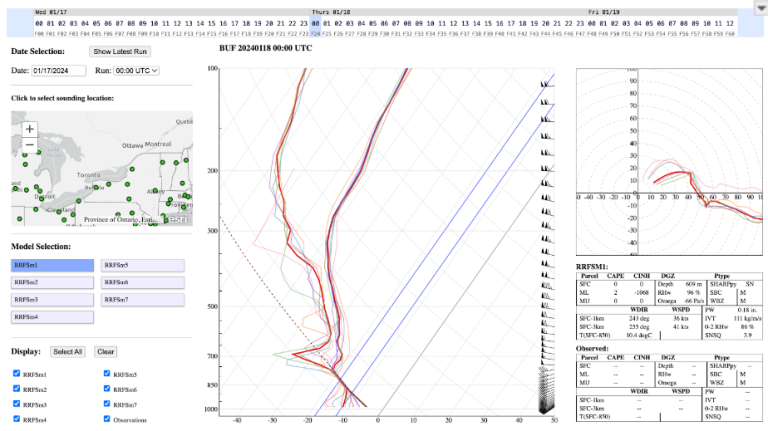
Figure 1. Sounding visualization data display showing the zoomed map of stations (upper left), ensemble member selection (lower left), skew Temperature log Pressure diagram (center), hodograph(upper right) and parameter table (lower right). Along the top is the forecast hour, extended for the full duration of the forecast of 60 hours, hourly.
NOAA Testestbeds and Proving Grounds at the 2024 AMS Meeting

The NOAA Testbeds and Proving Grounds will be represented at the upcoming 2024 American Meteorological Society (AMS) Annual Meeting in Baltimore, MD. The meeting will be held from January 28th – February 1st at the Baltimore Convention Center. On Tuesday, January 30th TBPGs will be highlighted in an all day session titled, “Advancing Hazards Forecasting and Decision Support through NOAA Testbeds and Proving Grounds” in the 14th Conference on Transition of Research to Operations. These sessions will include presentations from facilitators, researchers, and developers in TBPG activities across a range of hazards, and across the four types of testbed roles, including the testing and evaluation of advanced modeling, data assimilation, science and product development to advance forecasting and communication of those hazards. These hazards include, but are not limited to, aviation, fire and space weather, heavy precipitation, heat, winter storms, severe storms and tornadoes, hurricanes, hazards in the Arctic and Alaska, and coastal and ocean hazards. On Wednesday, January 31st, TBPG Coordinating Committee Chair Andrea Ray will be presenting a talk on the TBPGs at the NOAA Booth in the Exhibit Hall at 12:40 ET.
Fire Weather Testbed and Developmental Testbed Center Working Together
The Fire Weather Testbed (FWT) needs high-quality data and verification in order to improve fire-weather forecasts, so they are collaborating with the Developmental Testbed Center (DTC) to ensure that the most advanced verification methods and techniques and technologies are being tested and implemented in fire weather-based forecasting within the Unified Forecast System (UFS). Read more about the details of this collaboration here. The FWT will also work closely with other NOAA Testbeds and Proving Grounds to facilitate the evaluation and transition of state-of-the-art wildfire weather-related products and tools.

NOAA Testbeds and Proving Grounds at the 2023 AGU Meeting
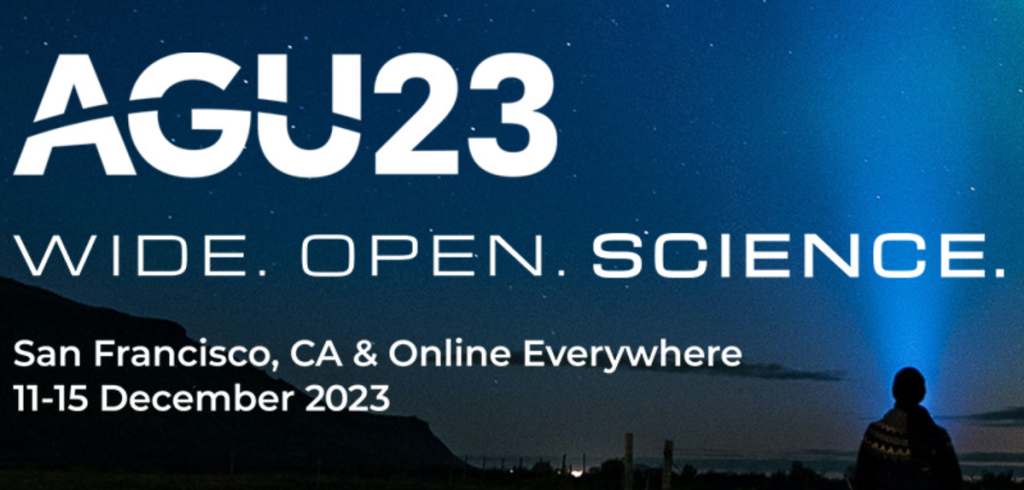
Louisa Nance, Director of the Developmental Testbed Center, provided a talk at the AGU Fall Meeting entitled, “Developmental Testbed Center: Informing Earth System Model Development Through Model Testing and Evaluation Solutions” at 4:10 pm PST on Friday, December 15th, 2023 in the Moscone Center Room 3003-West. The abstract for the talk, as well as the full list of contributors, can be found here.
Raising Awareness
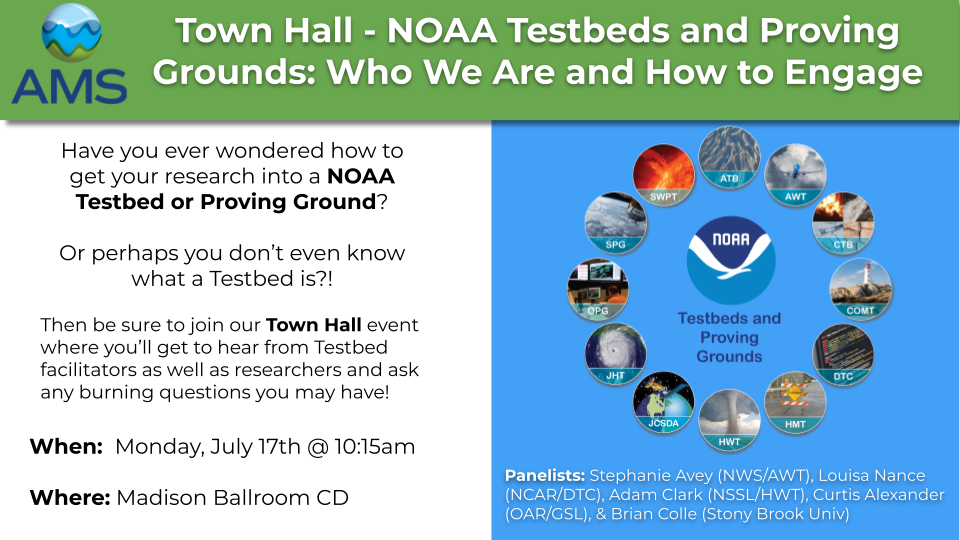
TBPGs Participate in Town Hall at WAF/NWP Conference in Madison, WI
This town hall will feature panelists from the Testbeds and Proving Grounds community to inform the community about how these entities are facilitating the transition of research to operations and what avenues are available for the community to engage, as well as collect community input.
TBPGCC Annual Meeting February 14-16
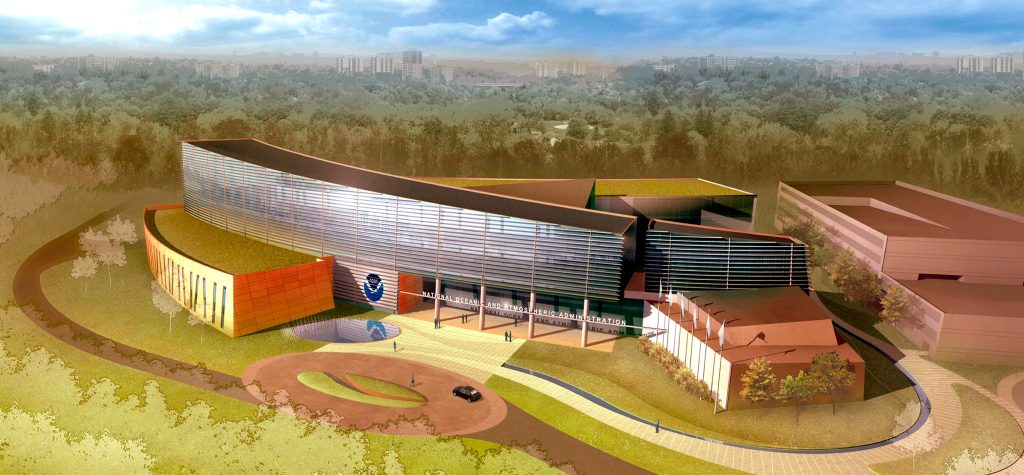
The TBPGCC Annual Meeting was held at the NOAA Center for Weather and Climate Prediction in College Park, MD on February 14th-16th, 2023. The agenda from the meeting is available here.
Raising Awareness

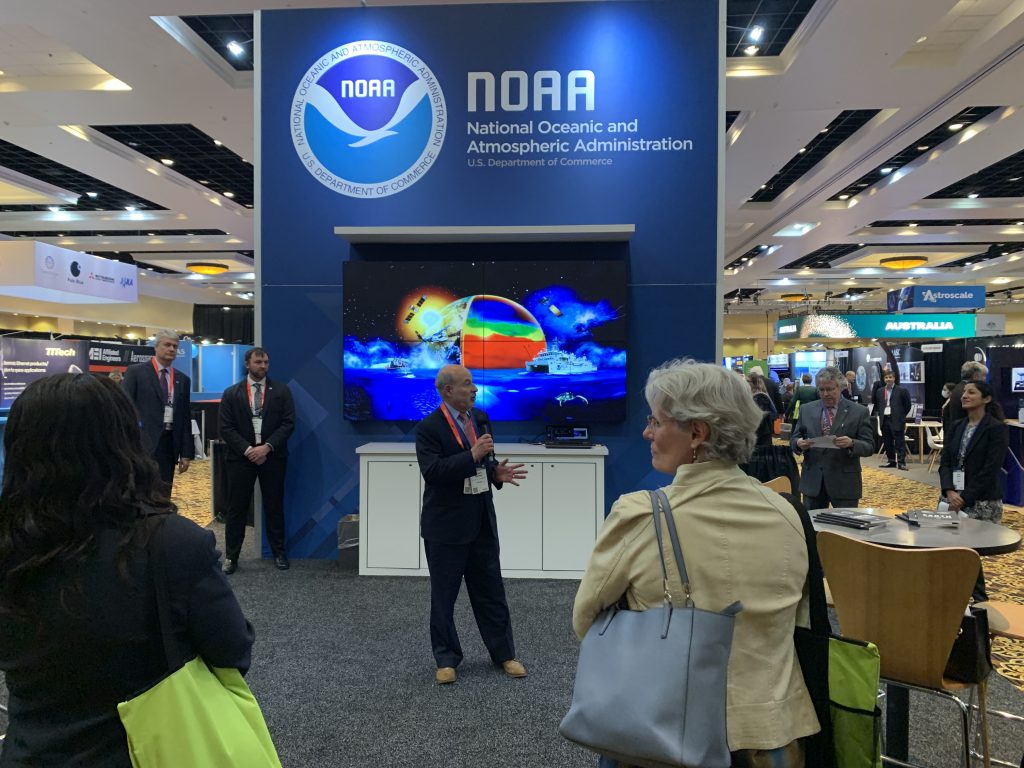
NOAA Booth at the American Meteorological Society Annual Meeting
TBPGCC Chair Andrea Ray will be in Denver to present a Booth Talk at the American Meteorological Society Annual Meeting. This will be held in the exhibit hall on January 11, 2023 at 2:40 PM MT. The AMS Annual meeting will be January 8th through 12th. A list of the various talks and sessions can be found here.
Raising Awareness


NOAA Testbeds and Proving Grounds: A Crucible for Transitions between Research and Operations
TBPGCC Chair Andrea Ray will be in Chicago to present a Booth Talk at the American Geophysical Union Fall Meeting. This will be held in the exhibit hall on Wednesday, January 14th, 2023 at 3:45 PM CT.
TBPGs Featured in a Fireside Chat
This Fireside Chat provided an in-depth look into how Testbeds and Proving Grounds facilitate the research to operations pipeline and feedback to research. It opened with remarks from OAR Deputy Assistant Administrator for Science, Gary Matlock, and featured a discussion among representatives of four Testbeds and Proving Grounds with Q&A from the audience.
Satellite Liaisons between SPG & other TBPG
NOAA’s Satellite Proving Ground (SPG) tests and evaluates satellite products before they’re transitioned to operations. SPG employs cooperative institute employees known as satellite liaisons for the Hazardous Weather Testbed (HWT), Storm Prediction Center (SPC), the NWS Operations Proving Ground (OPG), and Ocean and Weather Prediction Centers (OPC, WPC). This role within NOAA began in 2010 and is helping realize the benefits of satellite systems and explore the possibilities available from advanced satellites into operation across several testbeds. The Satellite Liaisons are advancing collaboration between testbeds within NOAA and play a key role in moving transition projects forward. Continue reading…
The Testbeds and Proving Grounds Coordinating Committee
The TBPGCC is featured in the Developmental Testbed Center spring 2022 newsletter ‘Director’s Corner’. DTC is a joint activity of NOAA OAR and NWS, NCAR, and the U.S. Air Force. DTC is a distributed facility where the NWP community can test and evaluate new models and techniques for use in research and operations.
NOAA Testbeds and Proving Grounds at the 2022 AMS Annual Meeting
TBPG Coordinating Committee Chair, Andrea Ray presented a talk at the meeting on January 25th, 2022 during the 12th Conference on Transition of Research to Operations.
